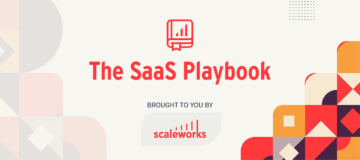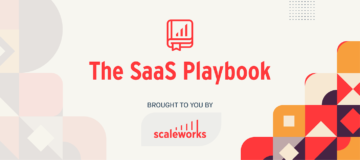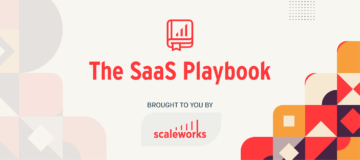Welcome back to The SaaS Playbook, a weekly rundown of the top articles, tactics, and thought leadership in B2B SaaS. Not a subscriber yet?
⚔️ A VC firm will often invest in similar companies to increase their chances of landing the big winner in the space. From a founder’s perspective, that can be pretty nerve racking. Having two or more companies in the same market enables VCs to share confidential info across companies, decide who they like best, and potentially sabotage the weaker link. The satirical Let Me Know How I Can Be Helpful crew (great Twitter follow if you aren’t already) shared how investing in competitors created a conflict of interest for Sequoia, and led to them giving one of the two 21m for free.
🤝 A great piece of networking advice is to be human to everyone you meet. It’s the mantra First Round Capital partner Chris Falic has used to build relationships over time, and has led him to investments in Warby Parker, HotelTonight, and Roblox. He went into the specific strategies he uses to employ this idea of being human in a recent blog, boiling things down to 7 rules for making memorable connections. One interesting rule – what Falic calls the Blue-sky brainstorm. If you can’t offer specifically what a connection is looking for, try brainstorming with them as it shows a real effort to try to help out.
🔔 When founders start to build their sales team, the biggest hurdle is often not knowing how to properly incentive reps. David Sacks broke down some simple math on how you can set your team up, along with the key elements per position and standard rates of you will find today. It has a great chart of the average base salary and quota by territory (for example, SMB vs mid-market or Enterprise) and what expected OTE should look like. It also answers some of the heavily debated sales structure questions, like if reps should get credit for expansions (he suggests giving expansion credit during the customer’s first year) and renewals (should also get credit here, at a much lower rate).
🦖 Strategic pricing can give you an edge in competitive markets, but at some point undercutting becomes predatory – companies who are able to bite the bullet on initial losses can price at big discounts, forcing others out of the market. Once the competition is gone, they go right back to original pricing. You rarely see SaaS businesses affected by this dynamic because the cost to service software is so low, but you do see many companies racing to the bottom in an attempt to win on price alone. Our take – buyers who prioritize pricing above all else are the most fickle, and pricing based on the value your product offers will lead to more enduring customers.
📊 If you work in SaaS you have probably come across ChartMogul at some point, most likely when looking up the right way to calculate net retention or another SaaS metric. That’s because they invested heavily in content since their inception 5 years ago, becoming a go-to thought leader in the space without spending a dime. Their CEO Nick Franklin shared how that content strategy got things going when they lacked funds for other activities, and other growth tips for bootstrapped businesses. He also delves into a dilemma many serving the SMB face – churn from customers going out of business. For Nick, slowly moving upmarket where more upsell potential lies is 100% of his current focus.
Source: https://thesaasplaybook.substack.com/p/-should-vcs-invest-in-competitors
- 7
- advice
- All
- articles
- B2B
- BEST
- Biggest
- Blog
- build
- business
- businesses
- capital
- ceo
- chances
- Companies
- competition
- competitors
- conflict
- Connections
- content
- credit
- Current
- Customers
- Edge
- Enterprise
- expansion
- Face
- Firm
- First
- First Round Capital
- Focus
- follow
- founders
- Free
- funds
- Giving
- good
- great
- Growth
- here
- How
- How To
- HTTPS
- hypergrowth
- idea
- Increase
- info
- interest
- investing
- Investments
- IT
- Key
- lead
- Leadership
- Led
- LINK
- Making
- Mantra
- Market
- Markets
- math
- mid-market
- net
- networking
- offer
- Offers
- Other
- Others
- partner
- perspective
- price
- pricing
- Product
- racing
- Rates
- Relationships
- Renewals
- Roblox
- rules
- SaaS
- sales
- serving
- set
- setting
- Share
- shared
- Simple
- SMB
- So
- Software
- Space
- Spending
- start
- Strategic
- Strategy
- tactics
- thought leadership
- time
- tips
- top
- value
- VC
- VCs
- weekly
- WHO
- win
- Work
- year
- years










